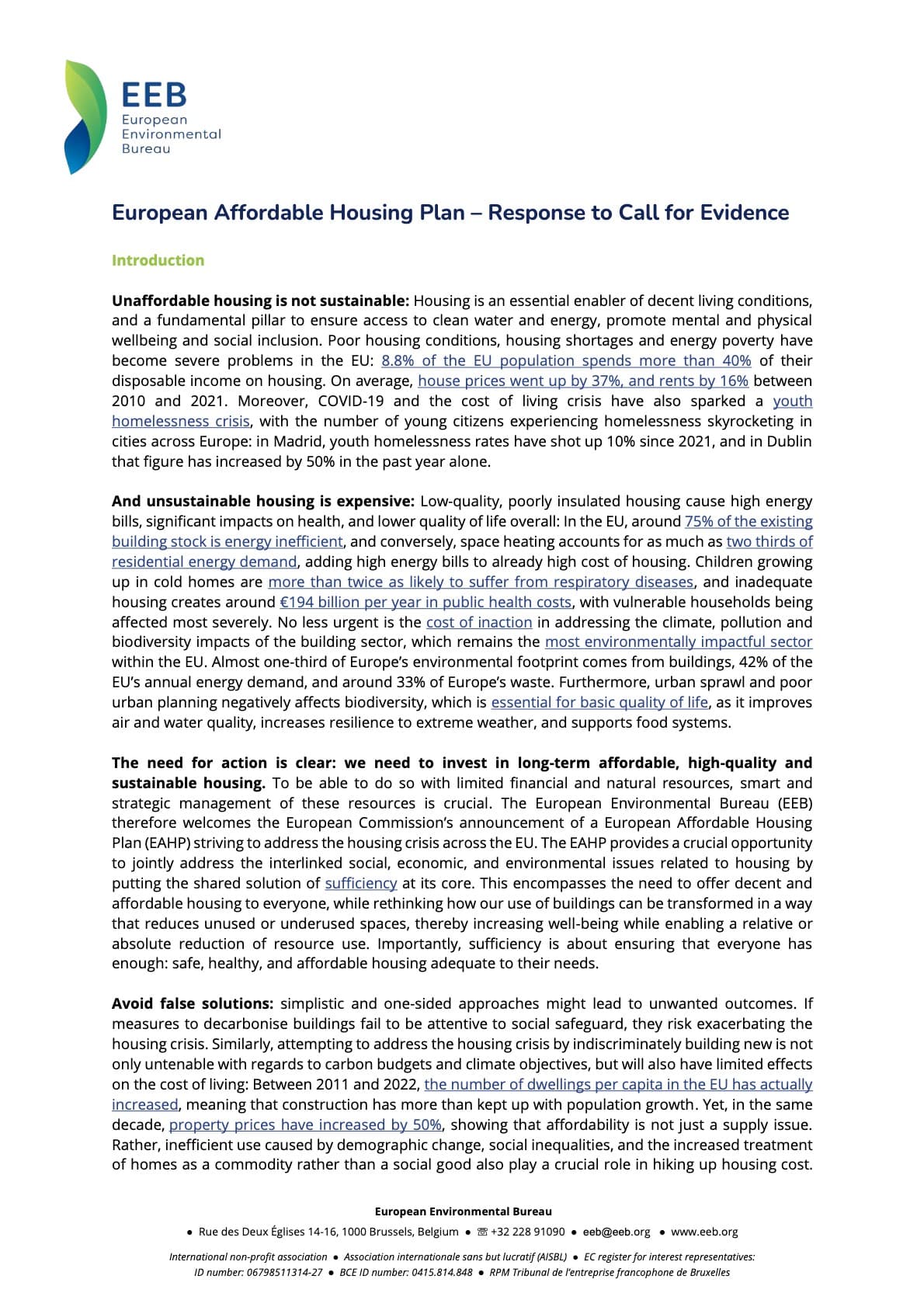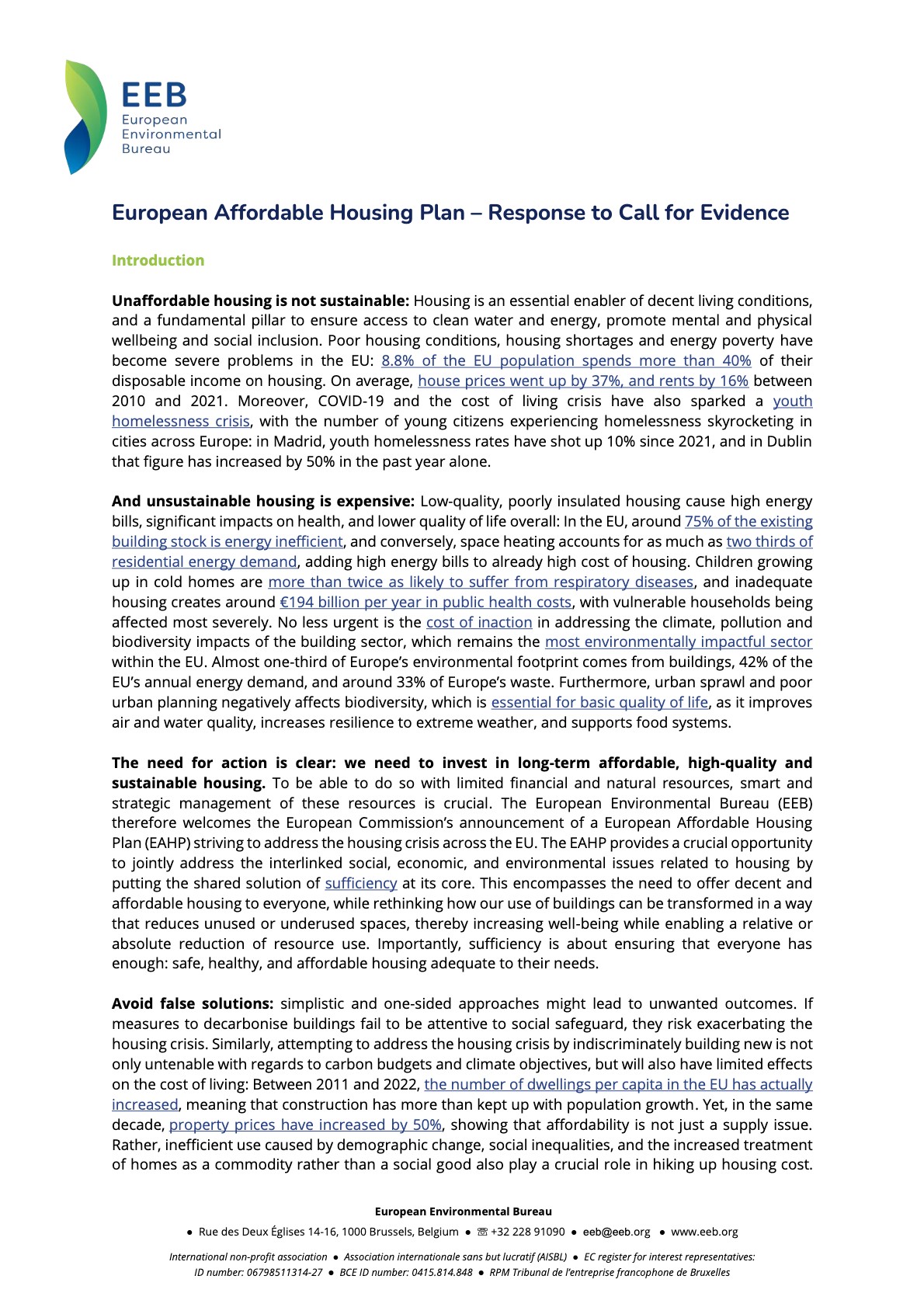The European Affordable Housing Plan (EAHP) is a response by the European Environmental Bureau (EEB) to the pressing issue of unaffordable housing in the EU. The EEB, an international non-profit association based in Brussels, aims to promote environmental sustainability across Europe. The response highlights the critical need for affordable housing as a fundamental pillar for decent living conditions, access to clean water and energy, and overall social inclusion.
💡Current Housing Crisis
A staggering 8.8% of the EU population spends more than 40% of their disposable income on housing, with house prices increasing by 37% and rents by 16% from 2010 to 2021. The COVID-19 pandemic and the cost of living crisis have exacerbated the situation, leading to a significant rise in youth homelessness, particularly in cities like Madrid and Dublin. Poor housing conditions contribute to high energy costs and public health issues, with around 75% of existing buildings being energy inefficient. This inefficiency contributes to high energy bills and health problems, costing approximately €194 billion annually in public health expenses.
💔Environmental Impact
The building sector is a major contributor to environmental degradation in the EU, accounting for nearly one-third of Europe’s environmental footprint and 42% of its annual energy demand. With energy-intensive homes affecting vulnerable populations disproportionately, the EAHP emphasizes the need for sustainable housing solutions that address both environmental and social issues.
🏡Comprehensive Approach Needed
The EAHP proposes a comprehensive strategy to tackle the affordability and sustainability crisis in housing. It advocates for smart resource management to provide long-term, affordable, and high-quality housing. The plan encourages investment in sustainable housing, which can create jobs—up to 18 jobs for every €1 million invested in energy renovations, according to a 2020 study.
📊Utilizing Existing Resources
The EAHP suggests improving the efficiency of the current building stock by reintroducing vacant properties into the market and prioritizing primary housing. In 2011, 16% of EU dwellings were vacant, with significant numbers in major cities. Under-occupied homes also present an opportunity to accommodate more residents, with studies indicating that existing buildings could house an additional 100 million people across the EU.
🔧Investment and Renovation
Investment in renovation and retrofitting vacant properties is crucial. The EEB recommends allocating a percentage of the pan-European investment platform specifically for converting and repurposing buildings into energy-efficient housing units. This strategy aims to address the urgent need for affordable housing while ensuring that vulnerable households have access to decent living conditions.
🛡️Protecting Vulnerable Households
To ensure long-term affordability, the EAHP emphasizes the importance of protecting vulnerable households from rising housing and energy costs. This includes implementing measures to reduce energy poverty and financialization in the housing market. Strategies such as upfront financing for renovations and monitoring speculative investments in housing are vital for maintaining affordability.
🌍Conclusion
The EAHP represents a significant opportunity to address the multifaceted issues surrounding housing in Europe. By focusing on sustainability, efficiency, and social inclusion, the plan aims to create a more equitable and environmentally friendly housing landscape for all EU citizens.

